June 13 – 18, 2011
I saw this map on one of the information signs near the Waterford Harbor Visitors Center and thought it would be perfect to use to help explain the currently planned route of our voyage. We will take the Erie Canal west to the Oswego Canal which empties into Lake Ontario. That is the same route we took for our 2009 voyage. However, at that time it was too late in the year to go further north, so we turned around and went back to Waterford. This time we will head out into Lake Ontario and up into the Thousand Islands, staying on the U.S. side of the border (see the dotted line). We only want to enter and leave Canada once, so we will head northward a bit on the St. Lawrence River and then backtrack to reach the Rideau Canal. We will head up to Ottawa and then over to Montreal via the Ottawa River. Then we will cross over to the Richelieu River (it has an extensive canal system) to get down into Lake Champlain. The Champlain Canal begins on the south end of the lake and then goes back to Waterford.
Here is FLUKE tied up at the Waterford Harbor Visitors Center. You can see our solar panels on the pilothouse roof; they are working wonderfully, when the sun finally comes out. Lock 2 (there is no Lock 1) is straight ahead; it is the first of 5 locks in a row that lift you up 184' to get your trip started on the Erie Canal. Notice the pavement on the walkway next to the dock is done in two colors: brick color and gray. The gray, going up and down and back and forth, depicts the Erie, Oswego, and Champlain canal systems, showing the locks and key towns along the way. It is very interesting and informative. Where the brick pavers end, the path turns to concrete which is imprinted with bare feet prints and mule shoe prints because that is how the barges were pulled from land through the locks and canals back in the days before they became motorized. Old photos show the big ruts alongside the canals and locks from walking the same paths over and over.
We spent 3 nights in Waterford, catching up on a variety of things, both for work and pleasure.
For more detailed information about Waterford and the other places we visit along the Erie and Oswego Canals, look at the 2009 blog entries.
I took this photo in late afternoon, just after a stormy day. The angled light and no wind lent such a peaceful feel to the landscape, just like I feel when I take the bridge over to Peebles Island State Park. I think about the contrast of today compared to when the factory workers took the same bridge across the river to work at the bleaching factory and how I would not have been a happy factory working woman. Now, the 3 miles of hiking trails give you a variety of vistas across the Mohawk River, let you walk through deep woods or stand on high bluffs, and see some wildlife.
The once prosperous mill town of Cohoes is next to Waterford. The trail hike offers views of the old cotton mill buildings, quite impressive in their own right. These buildings with some fascinating architectural features and views of the river and Cohoes Falls (not visible in this photo) are being converted into condos, instead of being left to deteriorate like many of the old buildings we see.
Out on one of the bluffs, and a peek through the trees, offered a good view of FLUKE across the river at her dock berth. The second boat behind FLUKE is a “relative”, a Krogen Manatee, somewhat of a smaller version of our Krogen Whaleback. When you own a Krogen, you automatically become a Krogenite.
That is the name of the business that occupies this building. Once an old mill building, a fashion designer of woman's clothes fell in love with its unique style and decided to base her operation of design and making of the fashions in Waterford. The building's impressive steeple top is easy to spot from Peebles and most other places in the village. Located next to Lock 2, the operator told us that he likes having Ursula there, because the steeple gets hit by lightning a lot instead of hitting the lock.
Lock 2 gets watched by people of all kinds, not just cruisers. The Waterford Harbor Visitors Center supplies information to tourists arriving by car. Most of them stop to take the time to watch the lock in operation either from down by the dock where FLUKE is located or by taking an easy walk up to the top of the lock itself. From there, you can look way down over the side and see the boats tie up and the water spill into the lock to lift the boat up. Boats, like FLUKE, that have a lot of mass under the water, can get really pushed around by the incoming water if the chambers are filling up quickly, so it is important to hold the lines that are attached to the lock walls tightly in place. We have one person on the bow and one person on the back upper deck holding a line and we have to pull very hard at times. It is critical to have good fenders to keep the boat from scraping the sides of the lock.
It is a treat for everyone when vessels like those in the above photo lock through. It takes them a long time to get aligned properly, and you wonder how in the world they will be able to fit in the lock. This barge had less than 2' of clearance on either side when it was finally positioned in place. Plus, its tug could not get in the lock at the same time. Since we had never seen this happen before, we wondered what was going to happen to the barge when it got lifted up without its tug.
When the lock had fully filled, the workmen attached lines from the barge to a huge capstan located on top of the lock wall. The capstan could be operated with electrical power by the lockmaster, slowly pulling the barge's lines tight and allowing the barge to gain some slow forward momentum. After it was started, the barge handlers could pull the barge along by hand, until it was beyond the lock gates and could be tied off to the wall. Then the lock was emptied out to allow the tug waiting down below to get in and be lifted up to reconnect to the barge. Were we ever glad that we were not waiting behind the tug and barge to try to use the locks the same day. It took over an hour and a half compared to what is about a 20 minute operation for us to lock through Lock 2 alone, and you have to lock through all five of the first locks without stopping once you get going.
This snapping turtle (over 2' long, excluding the tail!) was trapped between the barge and lock wall. The barge handlers were even cheering for it to get out of the way before the barge crushed it, and by some luck it managed to move forward of the barge and get out first when the gates were opened.
We were entertained by a group of teenagers having some old fashioned fun jumping off the bridge. Eddie and I would have been doing that back in our day at that age, maybe even now if we were out in the middle of nowhere and the water wasn't so cold! Apparently, it is now “against the law” and the kids had to be on the watch for the police to show up, which they did. Plus, the woman on the boat behind us was bitching about them making noise when they hit the water and splashed her boat. Game over.
Wayne was up to his elbows in flour as he took the time at the dock to catch up on some baking he had been wanting to do. Now we have many choices.
While Wayne was baking on the main deck, Eddie was below deck filling up our water tanks and doing other things at the same time. Suddenly, we heard the sound of cascading water and a mad scramble to try to control the flooding. The tanks had been overfilled and water was spilling onto the floor, including into one of the tool boxes. Eddie had a big clean-up on his hands, which was punishment in itself. There was no point in yelling about it, since we knew it could happen to any one of the Sea Stooges
My favorite wildlife “treat” came on our final evening. Eddie called me to the window to look out at something moving purposely through the water towards the shore by the entry to the lock. Only the head of the animal was visible, so I waited until it got to shore. I was SO surprised to see a huge beaver pull itself out of the water to go up on the shore and eat wild grape leaves. The beaver is the NY state animal, but we had never seen one here before. I would have loved to have gotten a picture, but with the distance and fading light, it wasn't possible. Eddie, being the man of the world that he thinks he is, said I didn't need one anyway because “all beavers look the same”.
With mixed feelings, sadness for having to leave the comfort of Waterford, but eagerness to get going again, we began the westward journey with our entry into Lock 2. Right after you exit the lock, you can see the remains of the original old Champlain Canal and some of the other stonework associated with earlier versions of the Erie Canal. Before the advent of concrete, all the stonework on the canals was done by hand by craftsmen who took a lot of pride in their work and built structures to last. In a few places some of the old locks are now on dry land, and I love to touch their walls and feel the cuts in the big stone blocks.
It takes about 2 hours to get through the first five locks. It is a pretty view looking back to the east from where we started our day. Notice the paint details on the canal railing. All the locks use the same colors, but vary in what areas get what colors. One thing is for sure: they are all kept up like parks. The lockmaster is responsible for doing all the painting, minor mechanical repairs, and landscape maintenance to the entire lock area.
This shot gives you an idea of some of what we see along the way. The lock has just opened to let us and another boat exit. The sailboat has its mast down; it is a pain for them because the mast has to extend right over their cockpit where they have to sit. Notice the crisp look of all the painted areas: railings, lock house (where the controls are located to operate the gates on the west end), the lightposts, and lamp. Also, this lock wall has recently been refinished since the surface is very bright and smooth. Some of the locks are very rough, with pieces of stone 3-4” in size exposed on the surface. That makes for a rough scrape for the poor fenders. On the left side you can see the bollards, the short, fat, blue posts with the yellow tops which are used to tie off to if a vessel has to wait to lock through (mostly barges use them, but we use them to tie off to if we are spending the night at a terminal wall like you see here). Notice the wall, made out of the big blocks. See the pretty trees and the mowed grass area above the wall.
We will move through the area, visible on the right, that had to be cut through solid, higher rock. That is not the norm since most of the canal follows the path of the Mohawk River, which generally went through lower, valley areas that had lots of marsh lands.
That structure up ahead is a water flow control dam. They help regulate the flow of water going downstream to the lock in times of high water flow. If the water can be slowed down, it will be less likely to damage the lock facilities. Plus, they help regulate the proper height of the water between locks, so it isn't too high for boats to get under the bridges.
The buildings along the canal vary from old, abandoned mill factories to places like this, some with spectacular views of the canal or surrounding countrysides. In many sections of the canal, there is not any kind of development, just open marsh or forest lands, especially where the canal follows the natural, winding path of the river.
School's out, so the local kids head to the river for some wet fun. They could really get out far from the shore with this long rope and being able to jump from higher up on the river bank.
We had gone far enough for one day, so decided to tie up to a terminal wall in the middle of nowhere right after we had gone through Lock 10. I had to show you what our view was: an abandoned power plant and rock mine. However, nature supplied a nice surprise. I could just step right off the boat and pick a vase full of daisies. I had been wanting to pick some for days, but don't like to do that where the local people will think I'm stripping the fields of their flowers. I was relieved that I wasn't bending over in the opposite direction when Wayne snapped this shot from the boat.
When I finished picking the daisies, I took a stroll around the terminal wall. I was so surprised to peek over the side of the wall and see many pairs of beady eyes staring back at me.
There were crayfish clinging to the sides of the wall, feeding off of debris floating on the surface of the water. I could see many more crawling on the rocks close to shore and on submerged branches. I went back after dark with a flashlight. There were so many crayfish along the water surface on the side of the wall, they were packed in pincer to pincer, hundreds that I could see, and who knows how many more that weren't visible. I was wondering if they were edible like those I've eaten at a crayfish boil. Yummy. But, I'm too chicken to try these guys, and I don't want to stink up the boat cooking them up.
Early on I told you that the canals were delayed in opening because of high water. That means there was a lot of debris washing in. We've had to be on the lookout for floating logs, and even worse, those that are slightly submerged and pointed toward us and may not move easily. The canal workers do a good job of pulling many of them out of the water using cranes on barges. Plus, many get caught up in the spillway dams. We've seen piles of them along the canal, and we just so happened to stop where we went by a pile walking Ursa.
This spillway dam is having work done to it, as indicated by the cover on the right hand side. The covers help contain all the debris that gets scraped off the metal and dust that accumulates. Each one of the segments of the dam can be individually controlled by lifting its gate up by using an overhead lift mechanism that moves on a track across the top of the dam. That way, water flow can be regulated from side to side as needed. There can be as many as 30 or 40 gates depending on how wide the dam is. The lock we have to enter is way over on the right hand side of the photo. If there is a lot of turbulence coming from the dam, the lock operator usually tells us to be prepared for how it may affect our entry into the lock. Plus, they have tried to make the lock walls long on the side where the dam is to reduce the affect of the water coming from the dam on the vessels trying to enter into the lock. Since the locks are so narrow, you don't want to be pushed sideways into the lock wall and smash your boat.
This trimaran was following behind us for a while and I thought it looked like a water bug since it was so flat to the surface of the water. The two guys aboard had quite a time trying to keep their balance when locking through since they don't have any railings and those pontoons are so tippy. Notice that when they are both standing on the same side, the other side of the boat comes completely out of the water! I kept waiting for the guy in the back to fall overboard since he seemed to be having such a difficult time moving around and the other guy kept yelling at him. Boating seems to generate a lot of yelling.
In fact, I'm being yelled at right now to finish this up, so I can take Ursa for a walk in the rain and then get dinner going. You know I'm still on FLUKE: tick tock, eat by the clock!
Thursday, June 23, 2011
Subscribe to:
Post Comments (Atom)


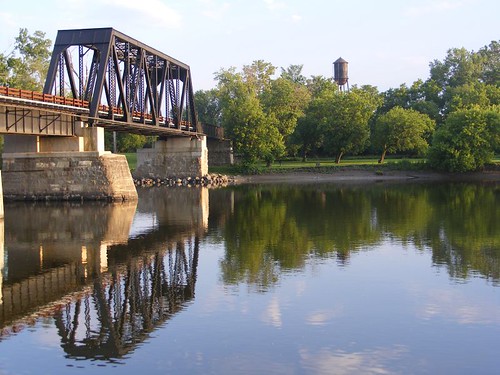


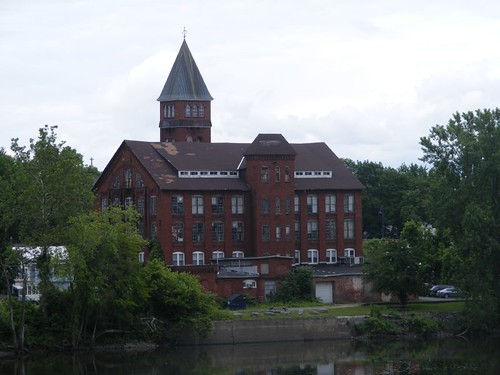


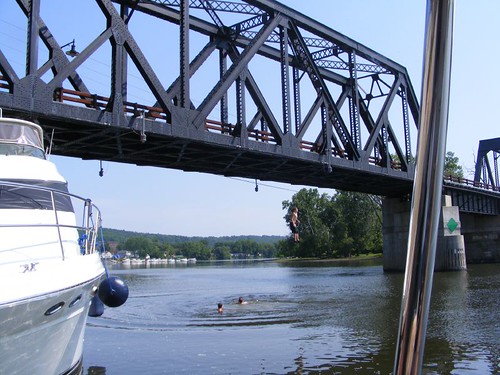

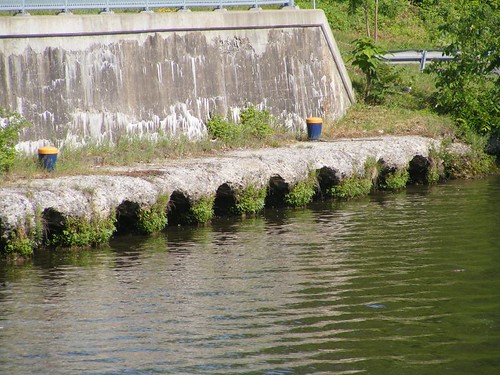


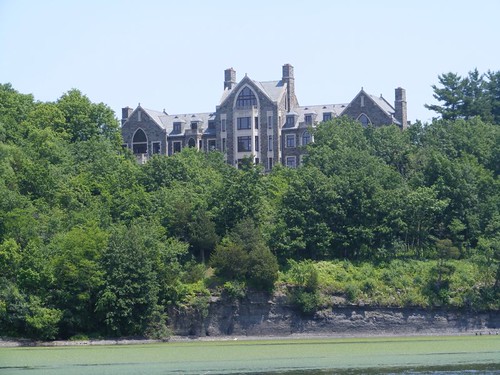
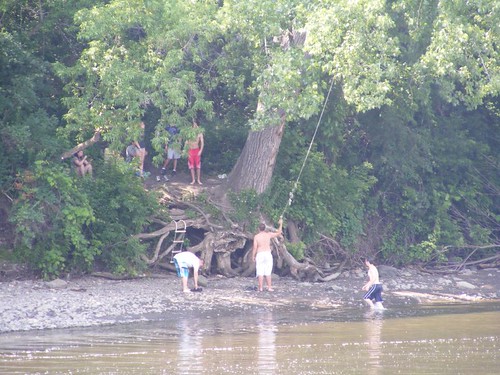
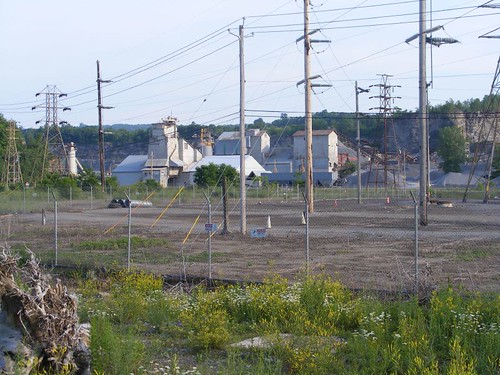

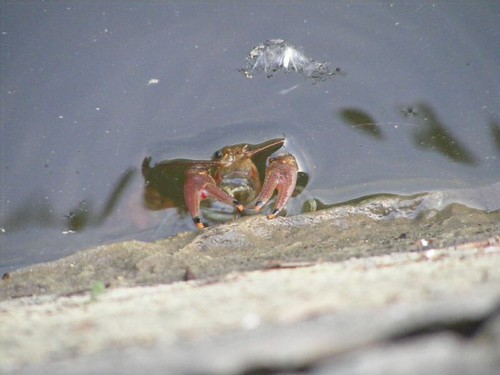

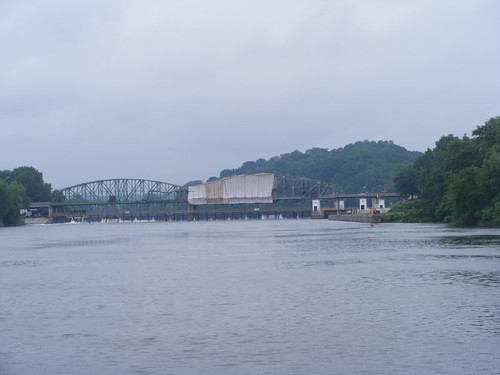
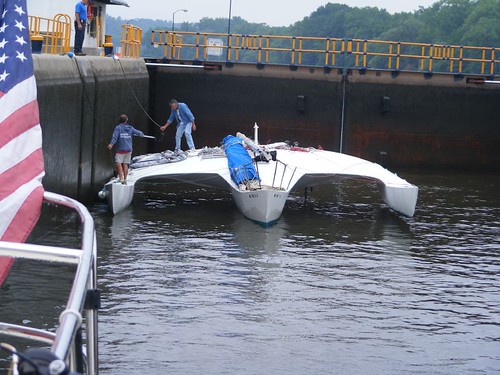








0 comments:
Post a Comment